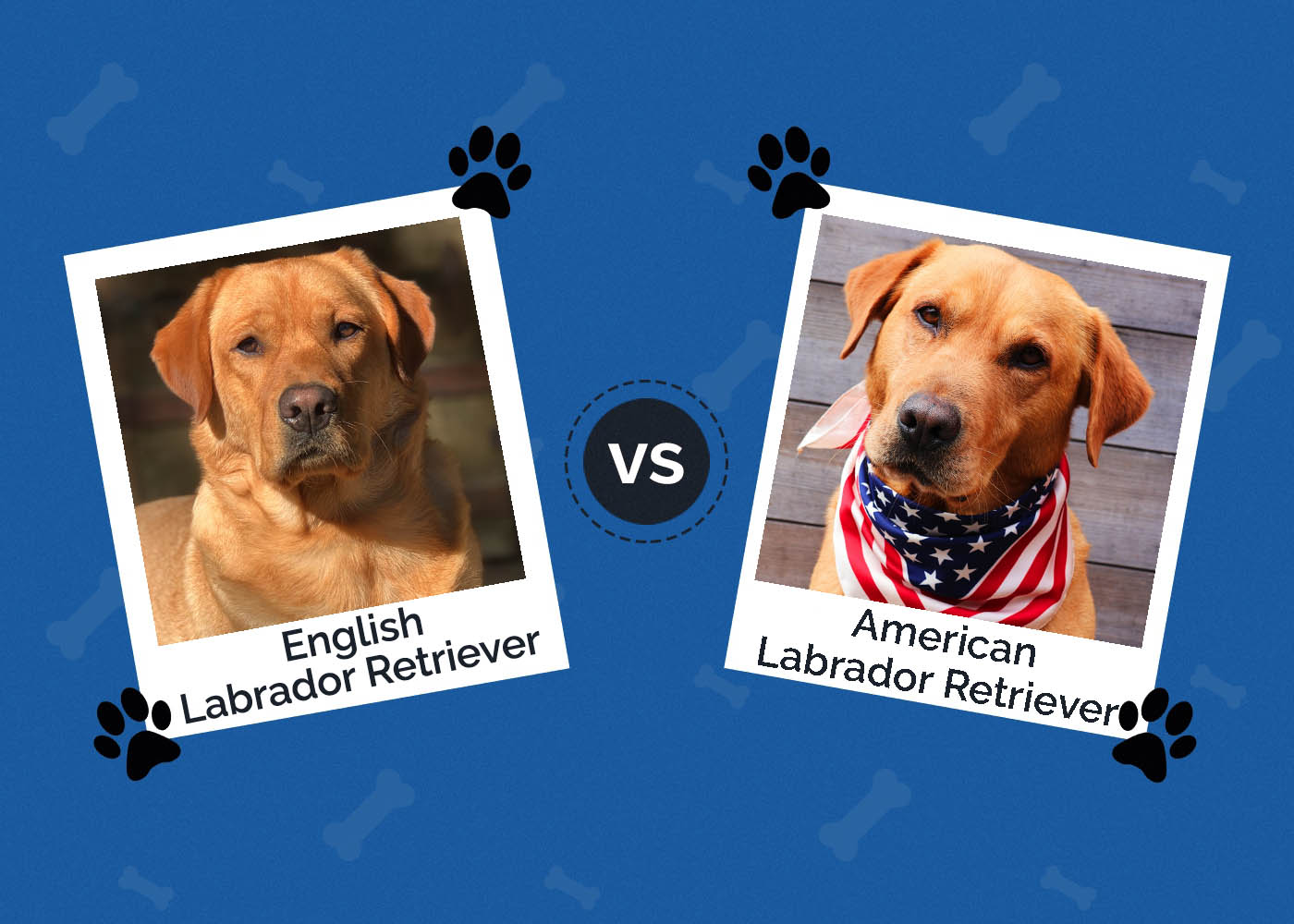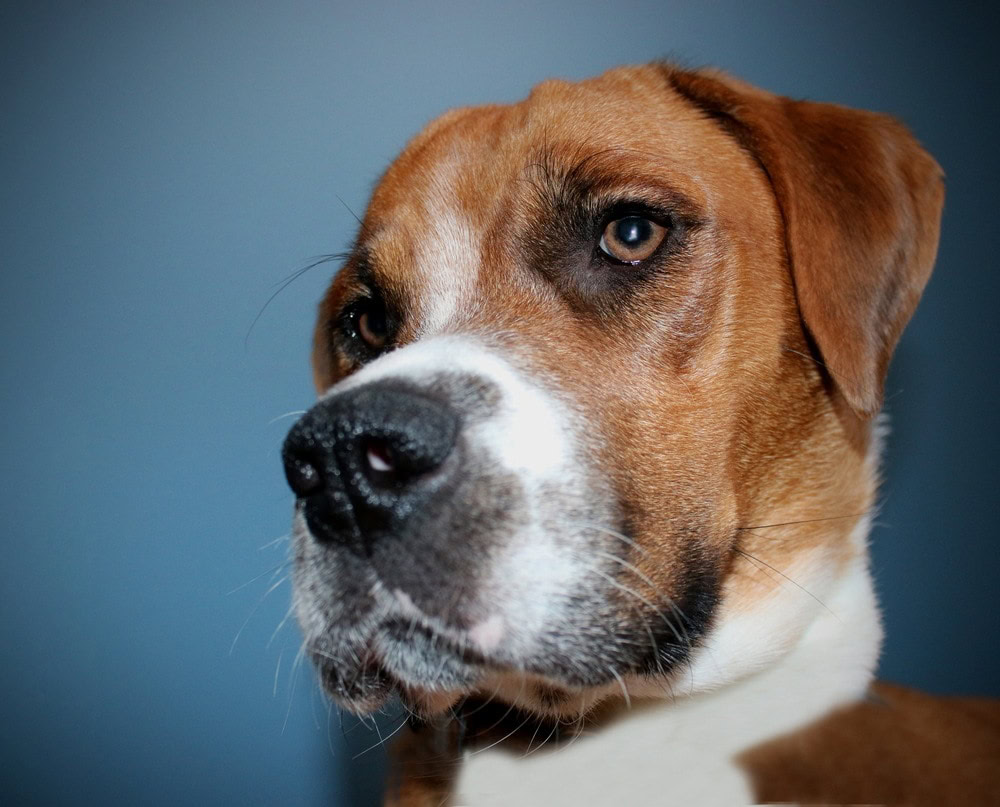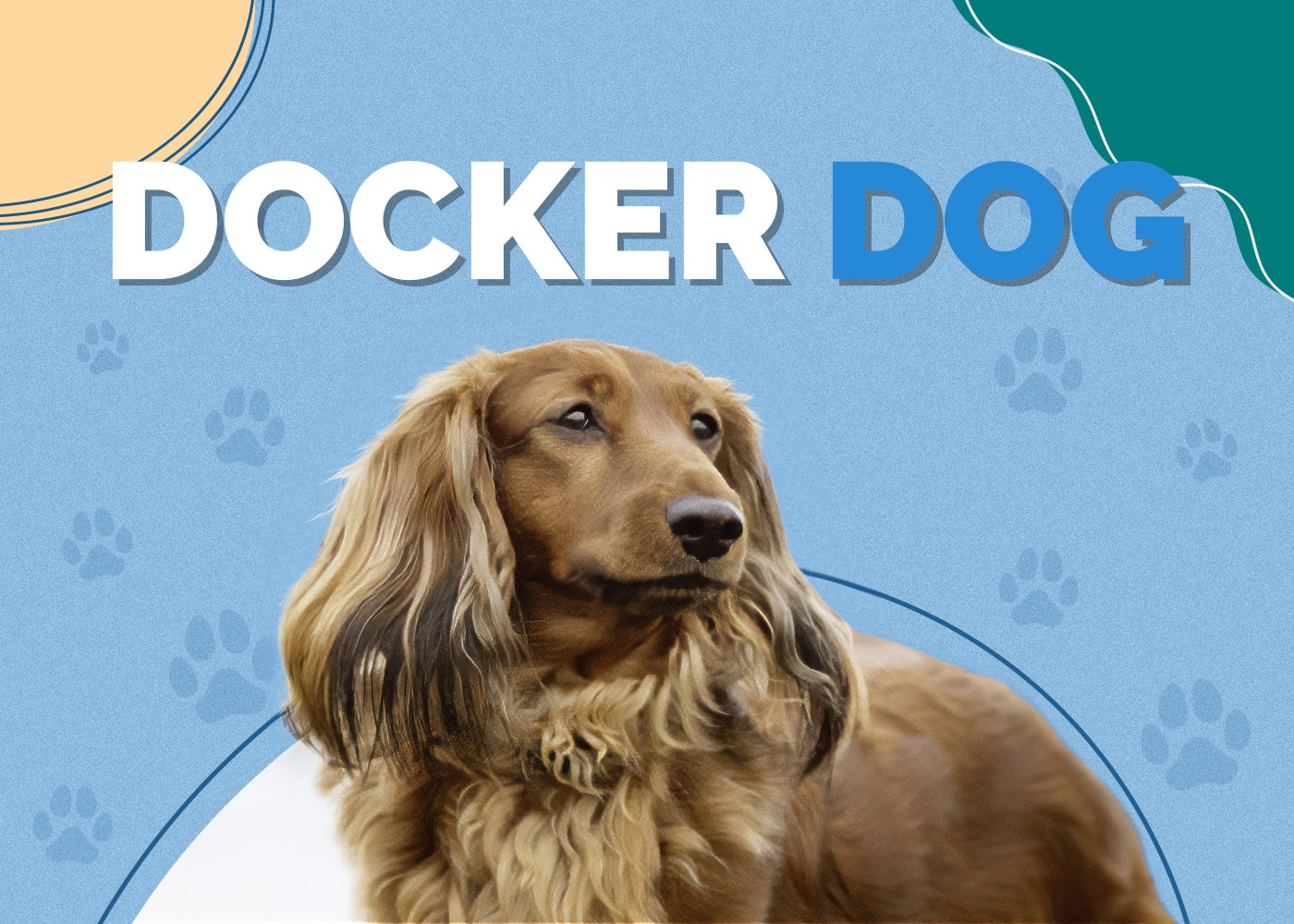Hanoverian Scenthound Dog: Breed Info, Pictures, Facts

Updated on
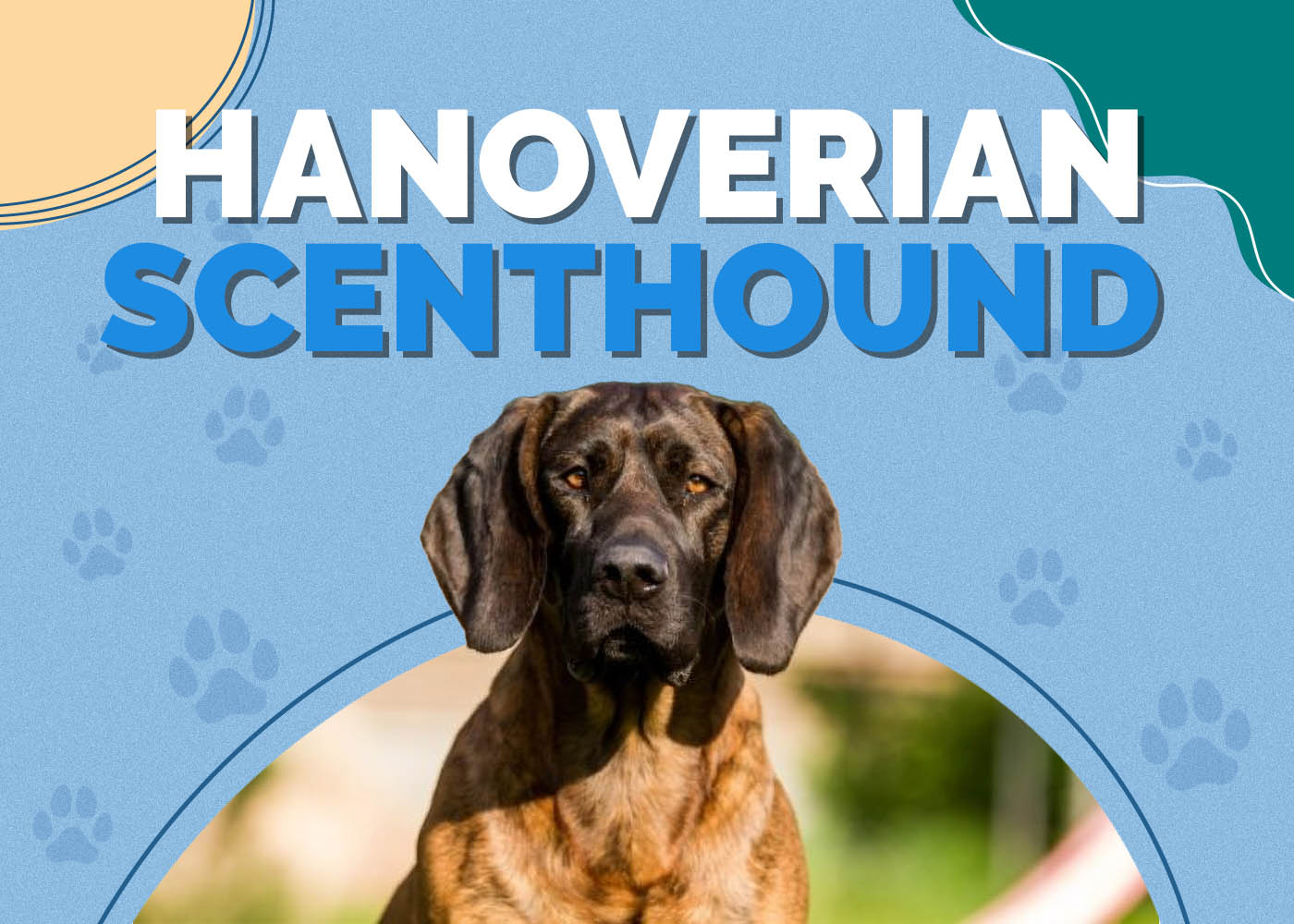
| Height: | 19 – 21 inches |
| Weight: | 80 – 100 pounds |
| Lifespan: | 10 – 14 years |
| Colors: | Red, Brindle |
| Suitable for: | Active families, House with a Yard |
| Temperament: | Calm, Loyal, Energetic, Independent, Playful |
The Hanoverian Scenthound (also called the Hannoverscher Schweisshund) is a purebred hound that has been used for tracking and hunting small game since early Medieval times in Germany. They are energetic dogs that stay puppyish longer than most other breeds and tend to bond strongly with one person in the family.
The Hanoverian is a medium-sized dog that tends to be on the larger side and is muscular and powerful. They tend to have a serious expression with a slightly wrinkled forehead and have medium-length ears that hang close to the face. The Hanoverian coat is short, thick, and rough in texture, and is usually red or brindle and can sport a black mask.
Hanoverian Scenthound Puppies
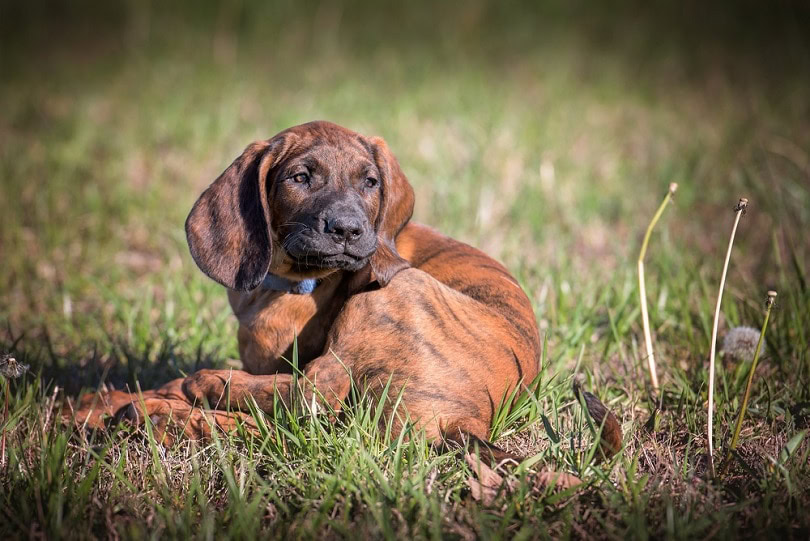
Finding one of these dogs can be very hard since very few breeders specialize in this breed. Take your time to find the correct breeder, or you can also try asking at local shelter to see if they have similar dogs.
The Hanoverian Scenthound is a very energetic dog that needs a great deal of exercise every day and is healthy overall. They are friendly but wary of other animals and strangers and are challenging to train because of their independent natures. Early socialization and training are essential for the Hanoverian Scenthound. Training can be challenging due to their stubborn personality so be ready to have regular training sessions and learn what the best methods for this breed are.
3 Little-Known Facts About the Hanoverian Scenthound
1. The Hanoverian needs a tall fenced yard.
They are very energetic dogs that will not do well in an apartment or small house. It’s recommended to have a fence that is at least 5 feet high for your backyard.
2. The Hanoverian will bond with one person.
They love everyone in the family but will form a strong bond with one person. This will usually be with their primary handler; someone with a strong personality.
3. The Hanoverian has been involved with the AKC only since 2017.
The Hanoverian Scenthound has been around for hundreds of years, but it’s only been in the AKC’s Foundation Stock Service (which allows for the record-keeping of breeds that are not registered with the AKC) since 2017.
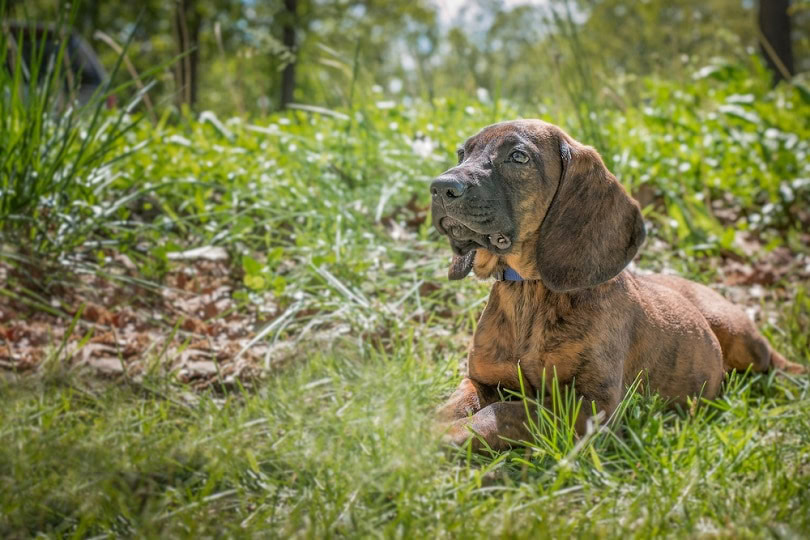
Temperament & Intelligence of the Hanoverian Scenthound 🧠
The Hanoverian Scenthound is a calm hunting dog with loads of energy that needs to be burned off every day. They enjoy spending time with their family and should not be placed in kennels and crates for long periods of time.
The Hanoverian is intelligent and independent, and therefore, training will be difficult, which makes them less than ideal for beginner dog owners. This scenthound needs space; if they are placed in a cramped space for too long, neurotic behaviors will emerge, such as excessive barking, destructiveness, and chewing.
Are These Dogs Good for Families? 🏡
The Hanoverian does make a great family pet as they get along very well with children. However, they will do better with older children as their rambunctious behavior might knock smaller children down. All children must be taught to respect dogs, and there should always be supervision.
Does This Breed Get Along with Other Pets? 🐶 😽
The Hanoverian will do best as the only pet in the household, but if they are socialized well as puppies and are raised with the other pets, they should get along with them. However, they have a high prey drive and are prone to chasing smaller animals, which needs to be considered when bringing a Hanoverian into the family.
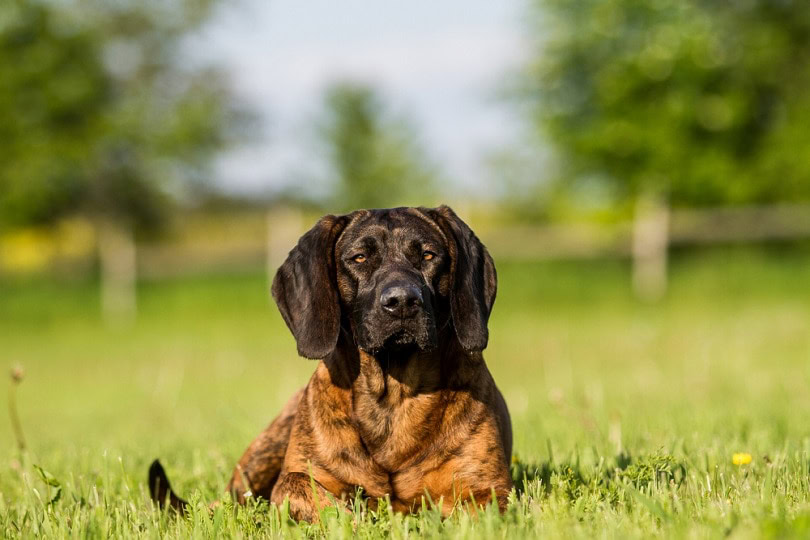
Things to Know When Owning a Hanoverian Scenthound:
Food & Diet Requirements 🦴
How often and how much you feed your dog depends on your Hanoverians age, activity level, and size. Purchase high-quality dry dog food (like this one) and follow the guidelines on the back of the food bag to help you decide on the amount you should feed your dog daily. You can also speak to your vet if you are ever worried about your dog’s weight and health.
Exercise 🐕
The Hanoverian Scenthound needs a lot of physical activity on a daily basis. They do exceptionally well with tracking and hunting activities but otherwise, consider other exercises such as hiking, jogging, camping, or just a lot of ball throwing.
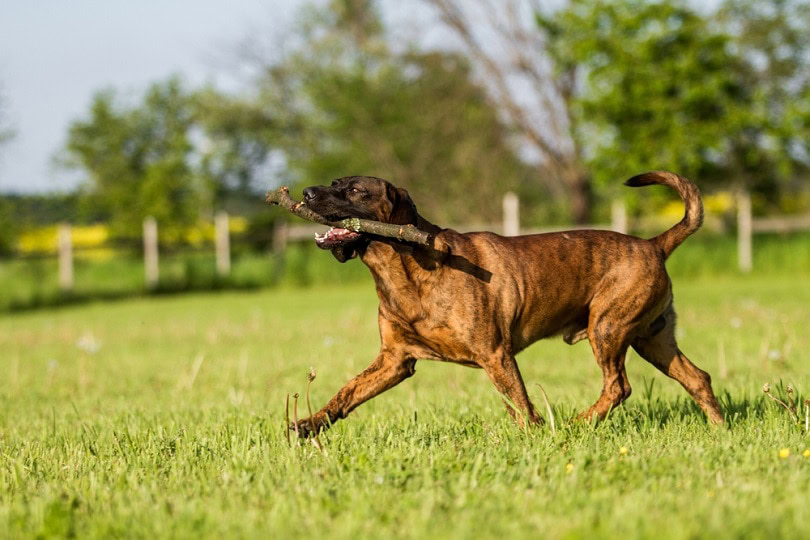
Training 🦮
Training the Hanoverian is most definitely a challenge due to his independent and stubborn nature. The owner of a Hanoverian must be a strong and confident individual who will use consistent and positive reinforcement training methods. This breed will not respond well to negative or rough training as they are highly sensitive.
Grooming ✂️
Hanoverians are easy to groom thanks to their short coats, which will only need an occasional brushing as they are infrequent shedders. The average dog only needs a bath about once a month with a good dog shampoo, and the Hanoverian could go even longer.
Their nails need to be trimmed every 3 to 4 weeks, and they should have their teeth brushed around 2 or 3 times a week. You need to keep a close eye on their ears, which should be checked for signs of infection and need to be cleaned at least once a month.
Health and Conditions ❤️
Most breeders will check their dogs for:
- Eye defects
A good breeder will obtain an Eye Certification for Dogs to help rule out any issues before breeding.
The rarity of the Hanoverian Scenthound has helped to rule out many of the health conditions many purebred dogs are susceptible to.
However, breeders will usually check their dogs for:
- Elbow dysplasia
- Hip dysplasia
- Heart disease
- Epilepsy
Male vs. Female
The Hanoverian Scenthound is usually about 19 to 21 inches in height and is 80 to 100 pounds in weight. In most breeds, females tend to be a little smaller and lighter than males, and therefore, it is expected that female Hanoverians will weigh in at the lower end of the height and weight scales.
Another consideration between males and females is the surgery option. Spaying a female dog is more expensive and takes longer for the female to recover from than neutering the male. Neutering or spaying your dog has the advantage of giving your Hanoverian a longer life as the surgery can help prevent health conditions in the future.
Lastly, many debates about the differences in personality between male and female dogs. It has been said that female dogs tend to be more affectionate and easier to train than male dogs, but there are always exceptions to the rule. Overall, how a puppy was socialized and trained and how a dog has been treated throughout its adult life will truly determine his temperament and behavior.
Final Thoughts
The Hanoverian Scenthound is a beautiful hound with a lovely calm and patient nature, which works well for families with children.
Finding one of these dogs will most definitely prove challenging, so you should start by contacting a breeder in your country, or outside of your country as the case may be. You can also speak to a national or local dog club, attend dog shows, and post your interest in finding a Hanoverian on social media. This breed’s rarity will make adopting one from a rescue group almost impossible, but it wouldn’t hurt to keep an eye out.
If you persevere, you could be lucky enough to bring a Hanoverian Scenthound home, which will provide your family with an amazing companion for many years.
Featured Image Credit: Aneta Jungerova, Shutterstock





